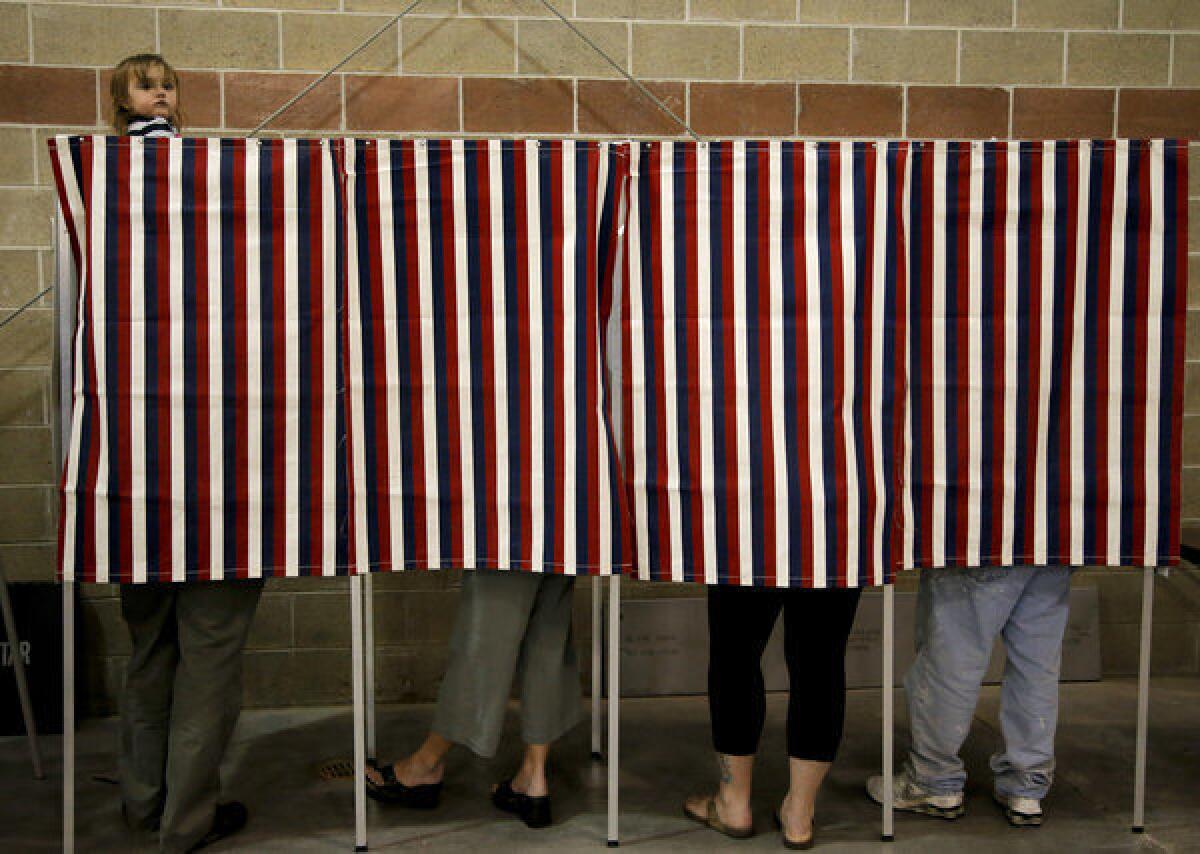Early exit polls bound to provide surprises, disappointments

With a long-awaited election day finally at hand, many people will be rooting around for the early word on who’s leading the presidential race. The best advice from the experts is don’t trust early leakers claiming they got the inside scoop from the exit polls.
The information gathered by the National Election Pool consortium—made up of ABC, NBC, CBS, Fox News, CNN and the Associated Press—has been leaked in the past, but is now closely held by a tiny group of individuals. They are sealed off from the outside world until 8 p.m. PST.
Any exit polling that comes out before that time is no doubt bogus but even numbers that emerge after 8 p.m. should be treated with caution. History shows that early exit poll information bears, at best, only a vague resemblance to the final outcome in each of the states.
PHOTOS: Scenes from Election Day 2012
Yes, professional pollsters will use the data and actual returns to help project which states will go to each of the candidates. The process of “calling” the states has become much more cautious, since early picks in the 2000 presidential contest turned out to be faulty.
That doesn’t mean that amateurs who get hold of early numbers won’t extrapolate beyond reason.
Mark Z. Barabak, the veteran Los Angeles Times political reporter, recounted Tuesday morning how the early exit poll “waves” in previous elections did not correctly forecast the results. In 2004, for instance, insiders learned that the first batch of exit results gave Sen. John Kerry a 19% advantage in Pennsylvania. He won the state, but only by 51% to 48%.
The surveys showed Kerry up 4% in Ohio and 4% in Florida too, but the Democrat ended up losing the Buckeye State to President George W. Bush 51% to 48% and losing the Sunshine State 52% to 47%.
Democrats who believed the Ohio numbers thought early that election day that Kerry would be the next president. They were particularly disillusioned when the votes came in, showing Bush had carried the state by about 180,000 votes.
INTERACTIVE: Battleground states map
In 2000, a first wave from the consortium exit poll had Texas Gov. George Bush up fractionally in Pennsylvania. He ended up losing the state to Vice President Al Gore, 51% to 46%. More significantly, the survey showed Gore leading Florida by 3%, but that purported margin did not materialize. Bush had 527 more votes when the counting stopped, giving him the state and the presidency.
Mark Blumental, the senior polling editor at Huffington Post, wrote Tuesday that even attempts to “weight” the incoming surveys-- using estimates and responses from an average of pre-election polls—doesn’t scrub out errors.
When he was running Pollster.com four years ago, Blumenthal said, he extrapolated out the results for each of the states, using the exit polls, and “found that the initial estimates had overstated Barack Obama’s margins by an average of 4.7 percentage points.” This did not mean all the results skewed pro-Obama; other exit poll projections put Sen. John McCain ahead of where he finished in some states.
VIDEO: The best, and worst, of the year’s political ads
A variety of pollsters have said the exit polls are most powerful not in making projections but in understanding how and why voters cast their ballots. When columns of figures begin arriving on a day all about the numbers, it’s hard to resist treating the information as delivered truth. Polling pros understand, though, that the exit polls will tell more in retrospect than they do in advance.
Follow Politics Now on Twitter and Facebook
Twitter: @latimesrainey
More to Read
Get the L.A. Times Politics newsletter
Deeply reported insights into legislation, politics and policy from Sacramento, Washington and beyond. In your inbox three times per week.
You may occasionally receive promotional content from the Los Angeles Times.







